GCWR and GVWR are two somewhat related, but different metrics that are used to determine the capabilities of a vehicle.
GCWR stands for Gross Combined Weight Rating and tells you the maximum weight that a vehicle plus trailer plus cargo can weigh. GVWR stands for Gross Vehicle Weight Rating and tells the maximum weight that a vehicle plus cargo can weigh.
| GCWR | GVWR |
| Gross Combined Weight Rating | Gross Vehicle Weight Rating |
| Maximum total weight for a truck plus trailer with any cargo | Maximum total weight for a truck with cargo |
| Used to calculate towing capacity | Used to calculate payload capacity |
The GCWR is used to calculate the towing capacity and the GVWR is used to calculate the payload capacity.
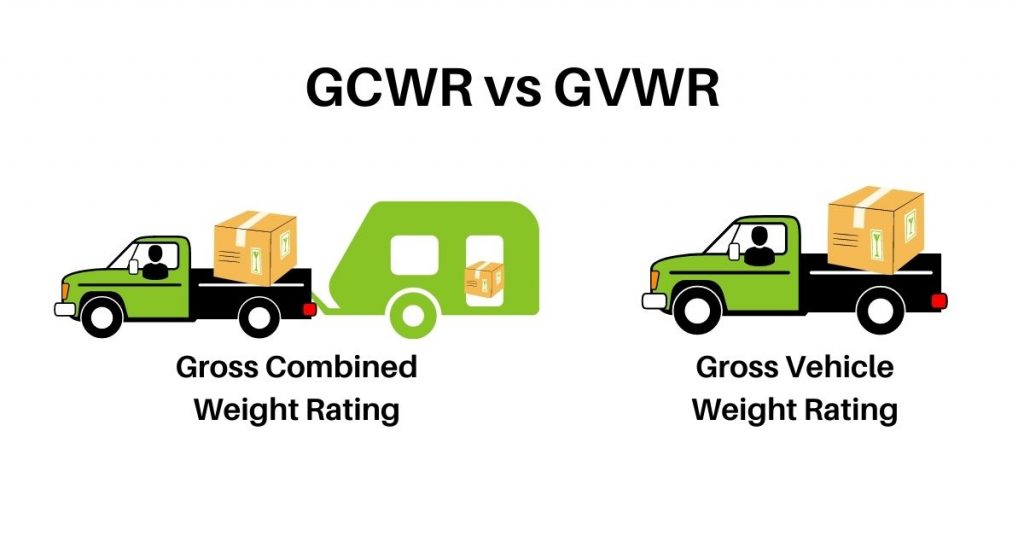
Payload Capacity vs Towing Capacity
Before we dive into GCWR vs GVWR it is important to understand the difference between payload and towing capacity.
These two numbers are important to understand the calculations and meaning of the two values.
The main values of payload and towing capacity relate to how much to truck can carry and tow respectively.
The payload capacity is the amount of weight that a truck can carry in the bed and cabin.
This value includes the weight of the passengers, weight of extra customizations, the weight of extra cargo and the tongue weight.
The tongue weight is the amount of weight that is exerted on a truck from a trailer on a hitch.
The tongue weight of a trailer is typically 10-15% of the total trailer weight. This is also typically the safest distribution within a trailer.
The towing capacity refers to how much a truck can pull from behind. This is more of a measurement of how strong the car is.
Payload capacity is determined by the value GVWR and towing capacity is determined by the value of the GCWR.
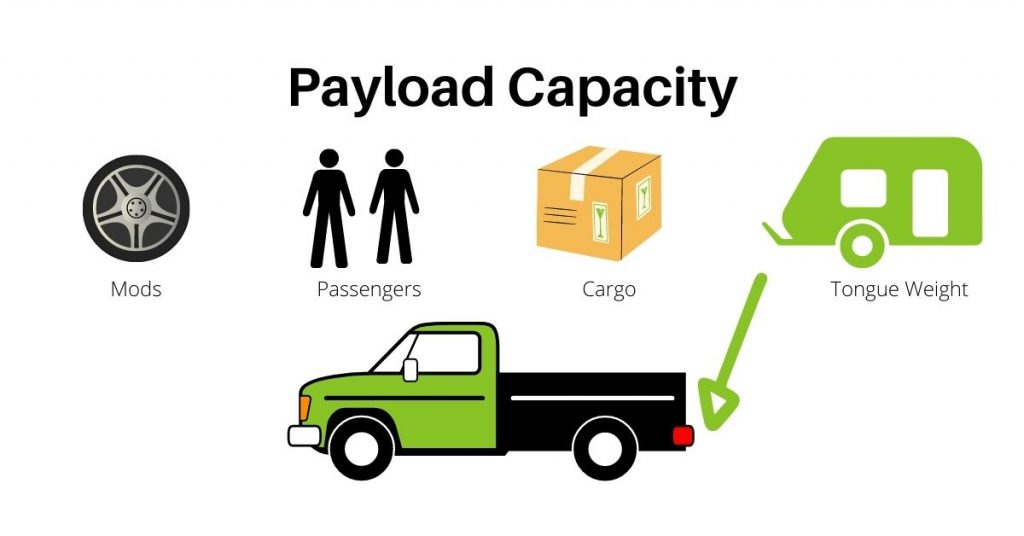
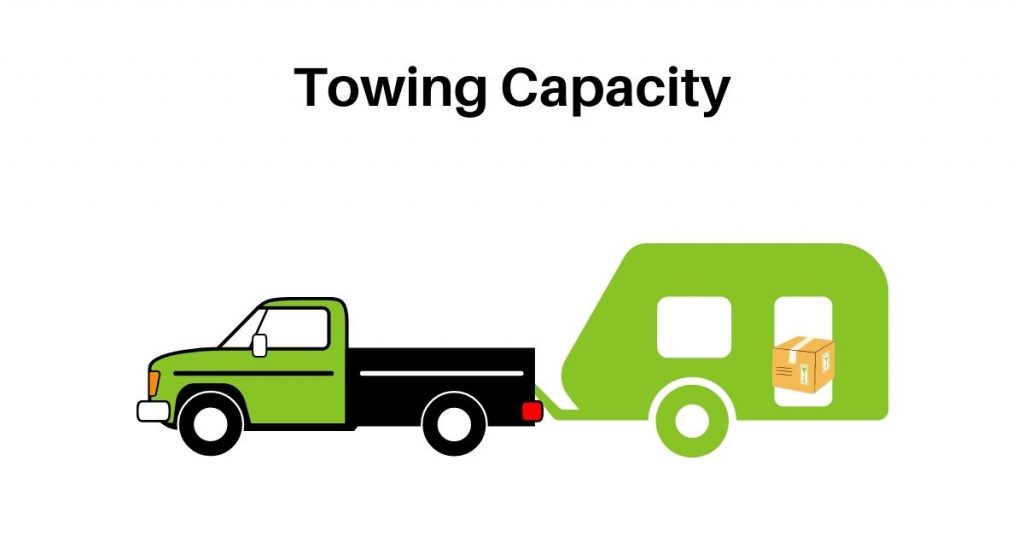
What is GCWR
GCWR stands for Gross Combined Weight rating and represents the maximum capacity that a truck plus a trailer can weigh.
It depends on many factors such as the engine, drive, cabin size, and manufacturer.
The GCWR helps to calculate the towing capacity. The GCWR is the combined value of the curb weight of the vehicle and the towing capacity.
This value is a specification provided by the truck manufacturer and is usually provided in lbs or kg.
The total of a truck plus trailer should never weigh-in more than the GCWR.
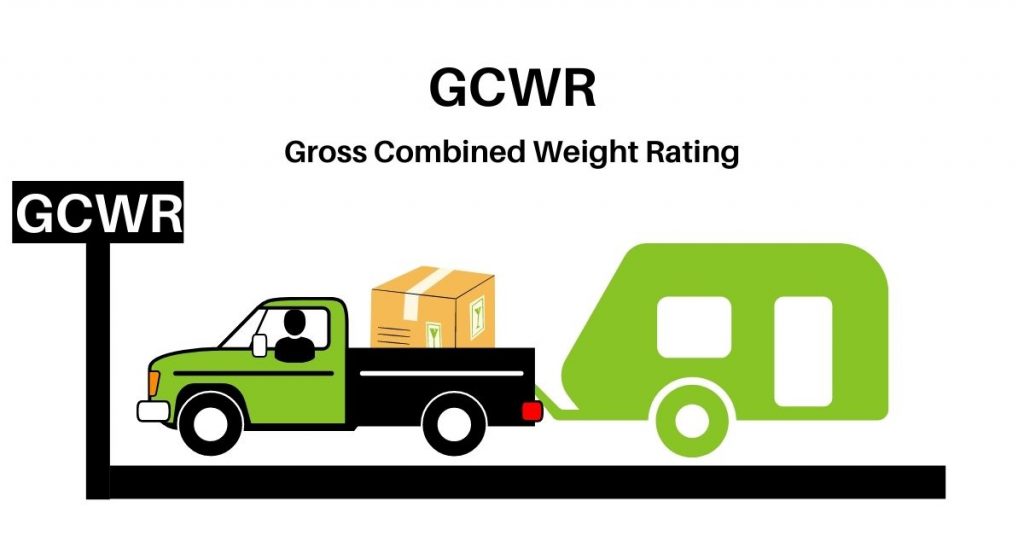
Why is GCWR important
GCWR is used to determine towing capacity. It can tell you the accurate amount a truck can pull SAFELY.
There are many reasons why it is important to follow the limitations put on a truck’s towing capacity. Too heavy of a trailer can lead to truck malfunction, breaking of axels, insufficient braking power and loss of control.
How to Calculate Towing Capacity Using GCWR?
To calculate the towing capacity you simply must subtract the curb weight from the GCWR.
Towing Capacity = GCWR – Curb Weight
This will give the maximum trailer weight that can be added to a truck.
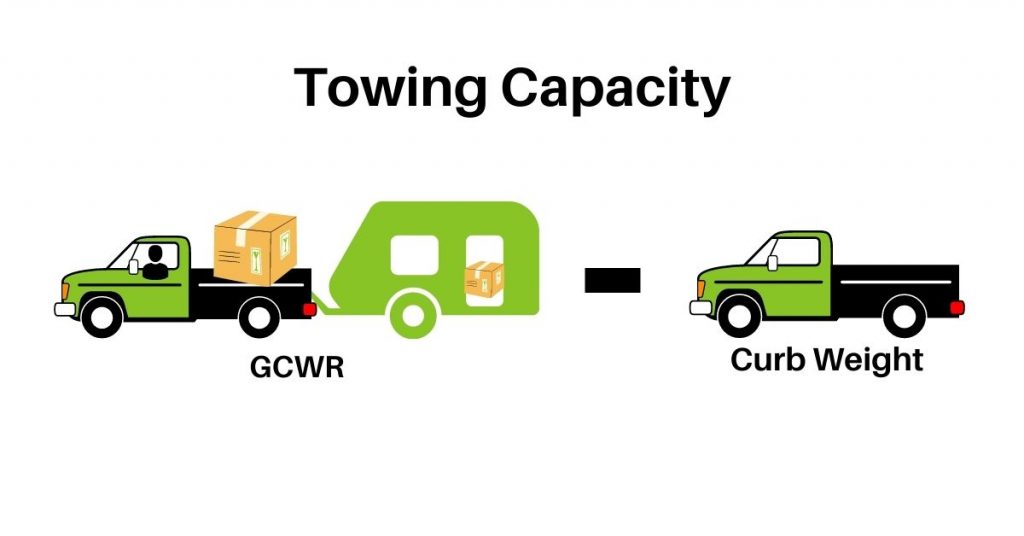
There are, however some other considerations that must be made. Since the GCWR is the total weight that a truck and trailer can weigh, any additional weight in the truck reduces the amount available in towing weight.
So to determine the actual amount that your truck can tow at a particular time, you must subtract passenger weight, cargo weight and optional customization/addition weight made on the truck.
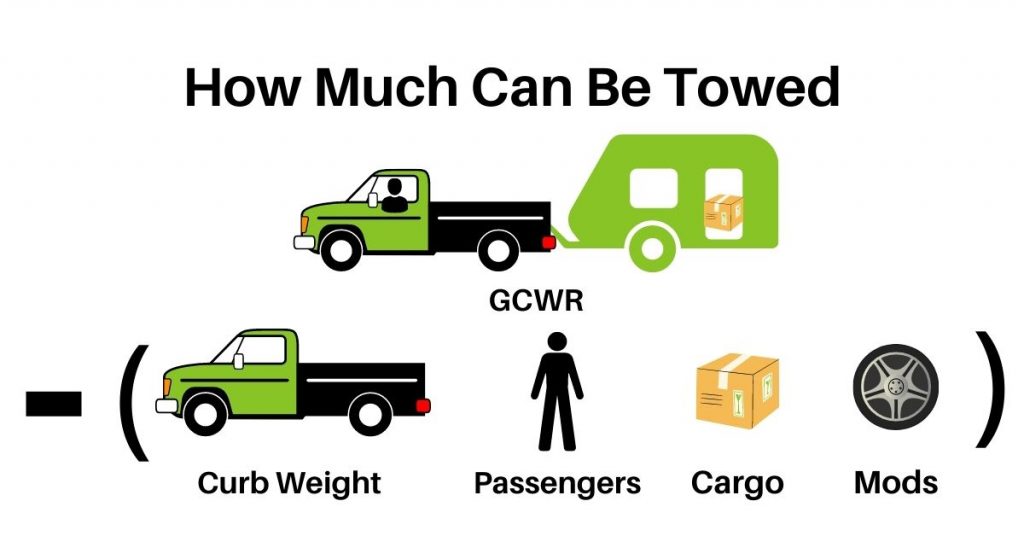
Towing Capacity Calculator
The calculator below will help guide you to determine at any point and time how much your truck can tow.
This also includes the tongue weight for 10 and 15% of the total towing capacity. This is important because you need to ensure that this weight does not make the truck weight exceed the payload capacity.
This will be further explained in the next section.
How is GCWR Determined?
GCWR is determined by the manufacturer, but the SAE J2807 document specifies the recommended testing procedures that a truck manufacturer should follow to provide their GCWR.
The SAE J2807 uses a variety of tests including:
- Acceleration
- Highway Driving Test
- Handling Test
- Braking Test
For more information on the specifics of each of these tests, check out MotorTrend.
Unfortunately, this document requires a purchase so I wasn’t able to really review these tests, but if you are interested in downloading the procedure, you can buy the document here.
What Affects GCWR?
So what makes one car better at towing than another?
The main components that determine towing capacity are the engine, suspension, and transmission.
Engine strength is typically broken down into horsepower and torque.
Horsepower is the more common of the two measurements for most people to know, but they are both important.
Torque refers to the amount of power the engine has and horsepower refers to how quickly the power can be completed.
Horsepower is actually calculated from torque by using the rpm of the engine.
These two values are important because they affect the towing capacity of a truck.
Torque is more important, the higher values of torque translate to higher values of towing capacity.
This video provides some more insight into what power and torque are in an engine.
What is GVWR
GVWR is the Gross Vehicle Weight Rating and is provided by a manufacturer that determines the maximum weight that a truck can carry on it.
As seen in the image below, the total weight of the vehicle, plus cargo, and passengers cannot exceed the GVWR.
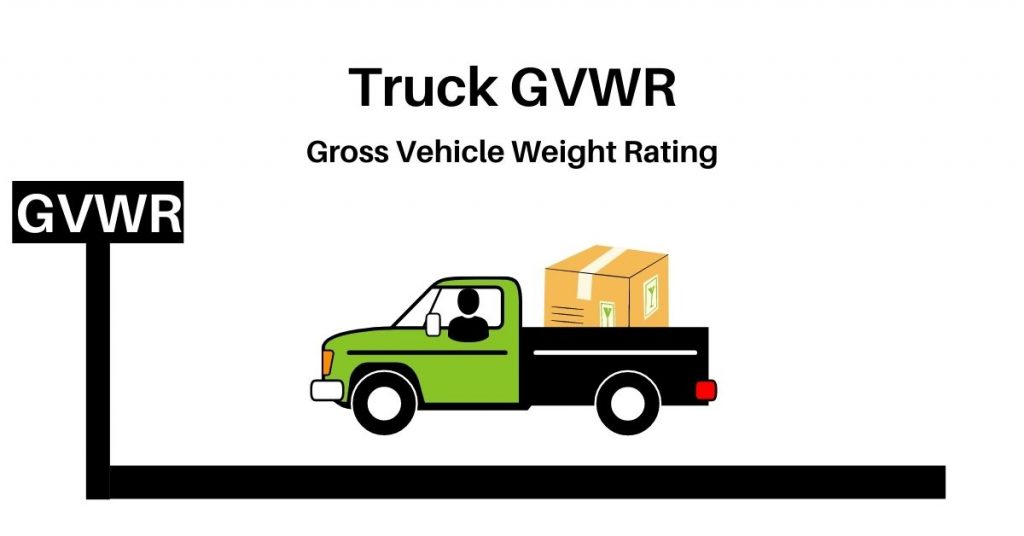
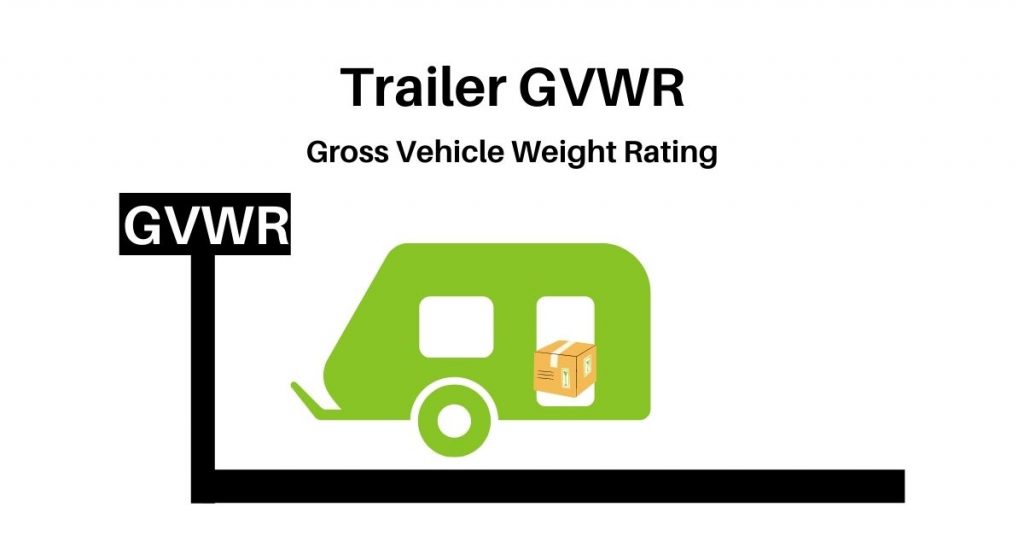
Why we discussed the payload capacity earlier in this article was to help understand these weights.
The payload capacity is how much weight can be added to the truck. The GVWR includes the payload capacity as well as the curb weight.
The curb weight of a vehicle is simply the weight of the vehicle (with a full tank of gas) as it comes out of manufacturing.
Why is GVWR important
GVWR lets you know how much weight your entire vehicle can weigh. If you exceed this level, you will have potential failures to the car and risk having safety issues.
GVWR is the main component that helps calculate payload capacity.
Another term for payload capacity is carrying capacity. This refers to the amount of weight that can be safely added to a vehicle.
GVWR vs payload capacity
GVWR and payload capacity are very closely related. The payload capacity is calculated by subtracting the curb weight from the GVWR.
Payload Capacity = GVWR – Curb Weight

The curb weight is simply the weight of the vehicle in stock form with a full tank of gas.
The payload capacity tells you how much weight your truck can carry. This includes passenger weight, cargo weight, and tongue weight from a trailer.
The GVWR is simply the maximum weight of the entire unit and the payload capacity is the weight of additional items.
Payload Capacity Calculator
Below you will find a simple payload capacity calculator to help you determine the maximum weight your truck can carry.
Though this information is helpful, you may be more interested in whether or not your truck can carry a particular amount of weight.
This calculator below compares any additional weight you have added to the vehicle with a simple yes or no answer of whether or not your truck can handle it.
What affects GVWR
Similar to GCWR, the GVWR is dependent on the components of the truck. However, this factor is more based on the physical structure.
There are two aspects of GVWR and that is how much the truck can control and how much the truck can physically carry without breaking.
There is some dependency on brakes and engine type to determine the strength of the truck to handle the extra weight, but there is also a lot of dependability on the wheels, axle, suspension, and frame that determines the amount of weight that can be put on top.
Conclusion
Simply put, the GCWR is the maximum total weight that a truck plus trailer can be on a scale.
The GVWR is the maximum total weight that a truck can have on a scale.
Each of these includes any additional weight added to the vehicle.
For GCWR this is trailer weight, passenger weight, cargo weight, and truck weight.
For GVWR this includes passenger weight, cargo weight, truck weight, and trailer tongue weight.

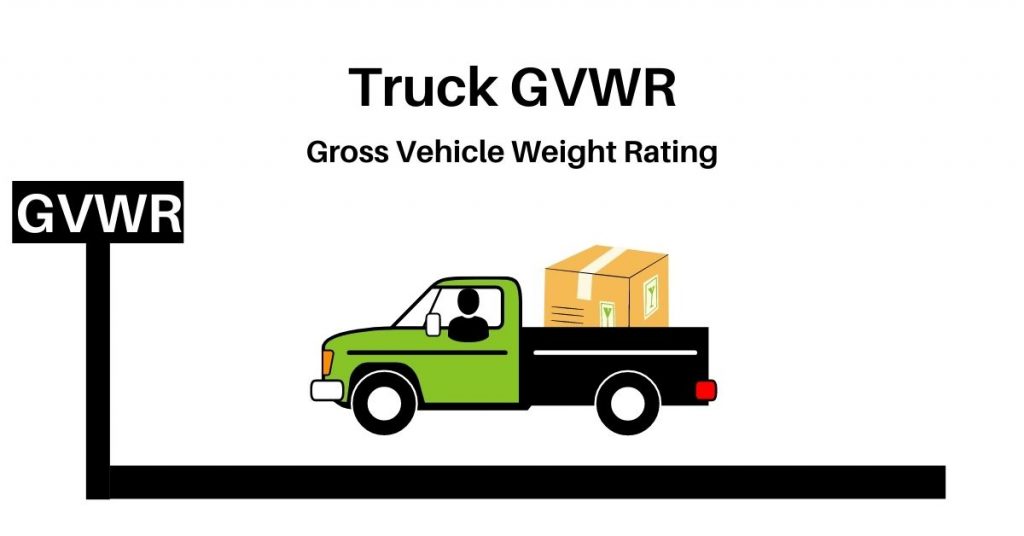
Though both are important, they are not directly related and are used to determine different capacities.
When you subtract the curb weight from GCWR, what is left is the towing capacity.
When you subtract the curb weight from the GVWR, what remains is the payload capacity.
For more detailed information on payload capacity, READ HERE.
For more detailed information on calculating towing capacity, READ HERE.



Guys, great attempt to explain the difference between GVWR & GCWR. However, I still don’t get it. And I have studied this issue for a while. Help me please.
It’s really just a distinction between the actual weight of a vehicle Vs. the maximum weight the vehicle is designed to safely carry, the weight RATING for a given vehicle.
1. (G)ross (V)ehicle (W)eight (R)ATING or GVWR is the maximum weight the vehicle is designed to carry safely/legally.
2. A TRAILER IS A VEHICLE.
3. No vehicle should exceed the GVWR – period. It’s unsafe.
4. (G)ross (C)ombined (W)eight (R)ATING or GCWR = GVWR of the truck PLUS the GVWR of the trailer.
Example:
Ram 3500 pickup GVWR = 11,700 lbs
PJ trailer GVWR = 10,000lbs
GCWR for this combination is 21,700 lbs
Which means, under no circumstance can the truck be heavier than its GVWR and neither can the trailer. That includes the actual weight of the truck with driver, fuel, passengers, and trailer tongue weight (how much weight the trailer adds to the truck) can’t exceed the GVWR for the truck. Additionally, the trailer (actual weight on its axles) can’t weigh more than the GVWR of the trailer.
The example truck might weigh 9000lbs empty, add all the other “stuff” ( people, luggage, dogs, kids etc) and a full tank of fuel it might weigh 10,000lbs (well below its RATING of 11,700lbs).
Then add the weight of the trailer tongue (about 10% of the total trailer weight) say its fully loaded, so that would be 1000lbs of tongue weight. Now the actual Weight (GVW) of the truck is 11,000lbs. Still safely under the RATING of 11,700. The trailer and its load weigh 9,000lbs, still safely under the weight RATING for the trailer. This is an acceptable combination, all good.
The Gross Combined Vehicle Weight or GCVW (not the RATING, the actual weight of truck and trailer) is 20,000lbs, still well below the (G)ross (C)ombined (W)eight (R)ATING for this combination. Essentially the manufacturers of the truck and trailer have certified this combination to be safe to operate on public roadways.
Hope this helps
Cheers!